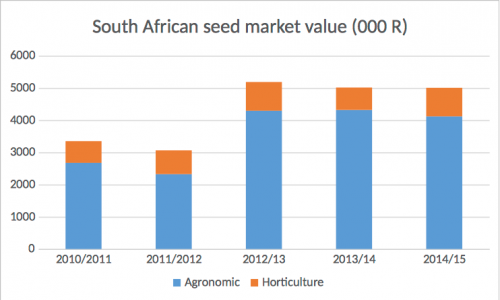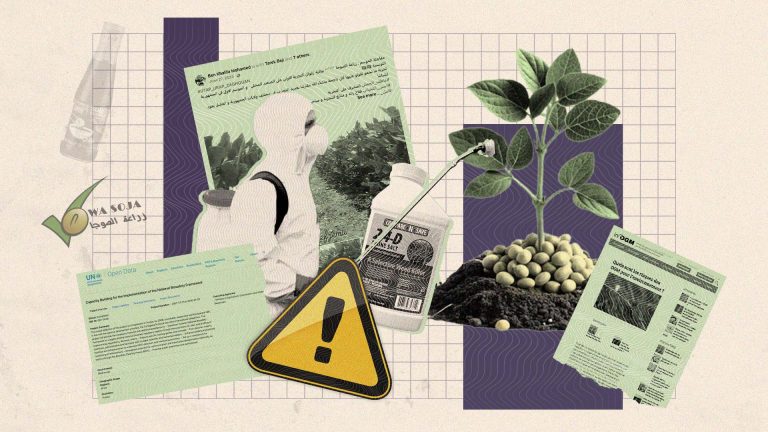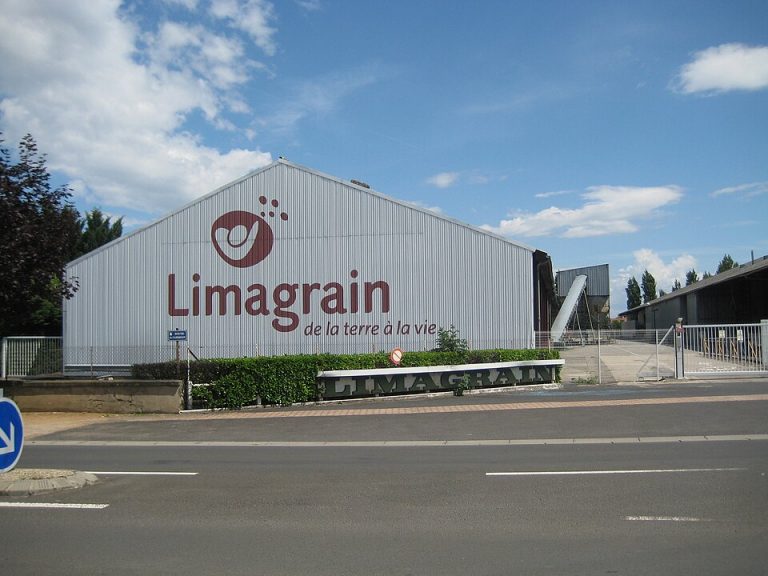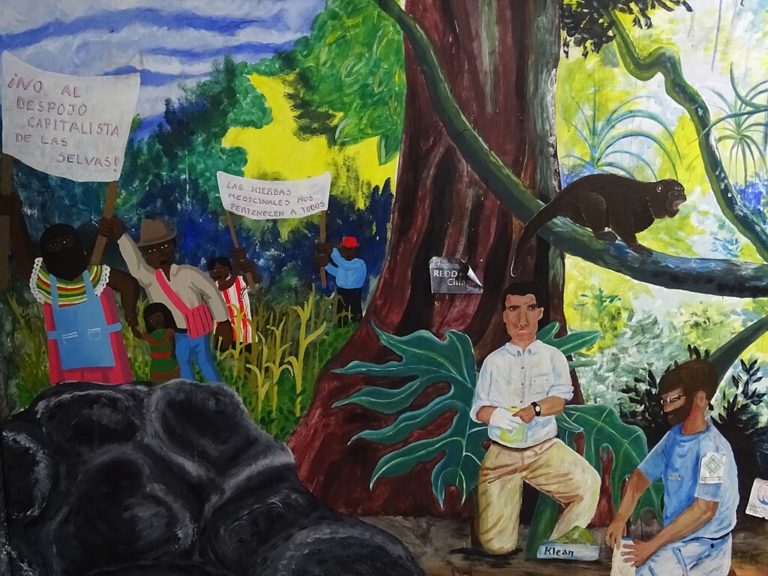The roots of hunger and inequity in South Africa’s corporate seed system
Par Mariam Mayet, Executive Director and founder of African Centre for Biodiversity
Publié le 15/03/2017

Twenty two years after the political democratisation of South Africa, economic power remains in the hands of a small elite, with there being widespread poverty, malnourishment and lack of access to the basic services on the part of the majority of black South Africans.
These dynamics institutionalised during the apartheid era shape South Africa’s seed systems. On the one hand there is a dominant and highly industrialised formal industry, within which large multinational and domestic seed companies produce and sell commercial certified seed primarily oriented to commercial producers. On the other, is a marginalised, farmer-managed seed system. In South Africa the long-term dominance of the formal sector has to a large extent reduced indigenous knowledge around seed and increased reliance on the formal system, more than in any other African country (ACB, 2012). Looking at the seed market controlled by large multinational companies such as Monsanto, Syngenta and Pioneer Hi Bred in South Africa, it is also clear that new forms of exclusion and domination have also arisen through legislation and other forms of institutional structures despite the end of apartheid. Failure to bring about much needed agrarian transformation to address historical inequities that is both ecologically sustainainble and socially just, include loss of cultural practises and agricultural biodiversity.
Seed diversity : its importance for the environment, food systems and small- holder farmers
Seeds are the very basis of human society and have been for all of human history. They are at the heart of a healthy food system and form the basis of the food we consume. The harvesting of seed from preferred plants is the basis of crop domestication over the 10 000 years of agriculture. Farmers have nurtured thousands of varieties ; adapting these to changing conditions with each growing season. Some varieties are resistant to diseases or pests. Others are tolerant of weather extremes like drought or floods or early frosts. Some have better yields or better nutrition as well as other desirable qualities such as taste and aroma, ease of cooking and processing or long storage capacity. Some varieties may also be prized for specific cultural or ceremonial purposes. This nurturing and maintenance of diversity has been made possible through intricate connections between families, communities and generations, where sharing and exchange of seed was seen as an obligation. For example, in West Africa the kola nut has cultural and medicinal uses as well as a deep ritual and spiritual significance (Hosken, L. (ed) Undated). In Nigeria it is presented to elders at first meetings, and often forms part of a dowry ; among the Igbo a kola nut is broken open and prayed over ; while among the Tikari in Cameroon, kola trees are sacred and, as such, collectively protected by the whole community. (Hosken, L. (ed). Undated).
Features of South Africa’s seed systems
South African agricultural support policy is oriented towards integrating black small-scale farmers into the commercial sector ; however, this is within the context of the dominance of large-scale commercial production. This makes it extremely difficult for new, small-scale entrants to compete effectively. Primarily, such support and orientation will benefit only a small layer of producers, with negative long-term social and ecological consequences, especially for rural households and communities. Tackling this inequity entails tackling structural inequity throughout the food system, characterised by high levels of vertical and horizontal corporate concentration.
After 1994, land reform and some state-driven group agricultural projects opened the door to the integration of a small layer of black farmers in the formal system, but did nothing to break down the existing agricultural structure. What did happen, however, was the expansion into former homeland areas of former co-operatives which had been converted into companies.
The South African seed sector is markedly different from that in most of Africa where on the rest of the continent, the majority of seed planted by small-scale farmers has been selected and saved from the previous harvest, or sourced from neighbouring farmers in the local vicinity, as well as from local rural trade (McGuire and Sperling, 2016). South Africa’s highly industrialised, commercialised and centralised seed sector is dominated by genetically uniform, commercially-bred seed varieties, which have replaced genetically variable traditional varieties also known as landraces, local varieties, or farmer varieties (ACB, 2013). Unlike most African countries, seed production and distribution is corporate-controlled and primarily serves the needs of commercial farmers (The African Seed Access Index (TASAI), 2015:1).
Off-farm (ex situ) seed conservation, supported by academic research and corporate breeding, characterises South Africa’s formal seed system. It is knowledge and technology intensive, with an emphasis on developing distinct, uniform and stable (DUS) plant and seed varieties. The commercial system focuses on major commodity crops, and particularly on their high-yielding varieties (Lohr et al, 2014). Commercial farmers are contracted to produce seed which must be certified by the national regulatory authority.
The Seed industry
By the 1980s virtually all the commercial maize crop in South Africa was planted to hybrid varieties and the industry had consolidated around six companies : Pannar, Sensako, Asgrow, Ciba-Geigy, Saffola and Cargill Hybrid Seeds. Monsanto bought South Africa’s largest two seed companies, Carnia and Sensako, at the turn of the last century. In 1998 South Africa, an extremely early adopter of GM technology, became (and remains) the first country in the world to commercially cultivate a genetically modified (GM) variety of its staple food. In the 2014/15 planting season 84% of the 1.4 million hectares planted to white maize (for human consumption) was GM while 90% of the 1.2 million hectares of yellow maize (for animal feed) was GM (USDA 2015). Soya is one of South Africa’s most important crops and has surpassed sunflower as the country’s major oilseed crop. In 2015/16 South African farmers planted a record 687 000 ha of soya beans, yielding a harvest of over 1 million tons. Monsanto’s GM Roundup Ready soya varieties, first approved for commercial cultivation in South Africa in 2002, now account for 90% of all soya grown in the country (ACB 2016).
Since 2010, when the seed market was worth around R3 billion, the market has become increasingly concentrated via a series of mergers and acquisitions, including : DuPont Pioneer’s take-over of Pannar Seed in 2012 ; Zaad Holdings (an investment arm of the PSG Group) acquired local seed companies Agrico, Klein Karoo Seed and Gebroeders Bakker ; and French agribusiness giant Groupe Limagrain purchased South Africa’s Link Seed and Zimbabwe’s Seed Co (which has a small but significant presence in South Africa). Corporate concentration in the seed sector and indeed throughout the agri-food system from input supply to retailing has resulted in a situation whereby farmers are becoming irreversibly disconnected from breeding processes.
According to the South African National Seed Organisation (SANSOR), the South African seed industry was worth just over R5 billion in 2014/2015, an increase of around R1.7 billion since 2010/11.

Seed policies and laws
South Africa’s seed regulatory system is entrenched in favour of corporate interests. Small holder farmers who may be interested in producing seed for formal markets are bound by regulations and rules that are designed to support economies of scale, plant breeders’ rights, and capital intensive production systems. These laws will require substantial revision to enable small-scale farmers who want to produce and maintain seed to do so without fear of criminalisation and without having to meet stringent certification and other requirements that are not appropriate for their needs or conditions. Indeed explicit policies, programmes and associated budgets for public sector support, to build and extend farmer seed systems and the seed diversity inherent in these systems is required.
Exploring solutions
A more equitable distribution of productive assets would be essential to redress historical injustices and inequalities and for an inclusive economic future. Practical solutions based on farmer-controlled seed breeding, sharing of germplasm and agro-ecological production methods that do not rely on synthetic, fuel-based fertilisers and seeds manufactured in laboratories must be explored. There are alternatives in existing farmer practices – both black and white – of on-farm seed saving and farmer-to-farmer exchange and knowledge sharing amongst farmers, supported by scientific experts, especially in our public sector agricultural research institutions.
Integration of agroecology is fundamental to families’ livelihoods and nutrition as well as in the national, regional and international policy spaces.
South Africa must shift towards developing and implementing key strategies for food and dietary diversification at the community and household levels, including the promotion of traditional foods and home gardens and the raising of small livestock ; improved preservation processes and storage facilities for fruits and vegetables, to reduce waste, post-harvest losses and effects on seasonality ; the strengthening of small-scale agro-processing and food industries ; and nutrition and education to encourage the consumption of a healthy and nutritious diet (Lopez Villar, 2015). It must shift its agriculture paradigm to agroecology, which can provide enough food for all in a sustainable manner (De Schutter, 2010 ; 2014), by building on traditional agriculture, which is extremely rich in biodiversity and the diversity of ecosystem.
These trends in favour of agro-ecology as part of the solution have also influenced the discourse of seed which is opening up to alternatives to the standardised Green Revolution package. There is widespread recognition that farmers – and in particular women – reproduce most seed varieties even if these are not comparable in formal market value to maize. Seed is in the hands of women. These women will need to be active participants in shaping and implementing activities to widen the diversity of crops and seed varieties and to protect and grow farmer seed systems. There is growing interest in securing farmers’ rights and FMSS as a component of the agenda for agro-ecology and diversity and within an understanding of food systems as complex systems. The International Panel of Experts on Sustainable Food Systems (IPES-Food) 2015 report notes that issues of hunger, malnutrition, biodiversity loss, ecosystem degradation, cultural erosion and social conflict cannot be viewed or treated in isolation (IPES 2015).












